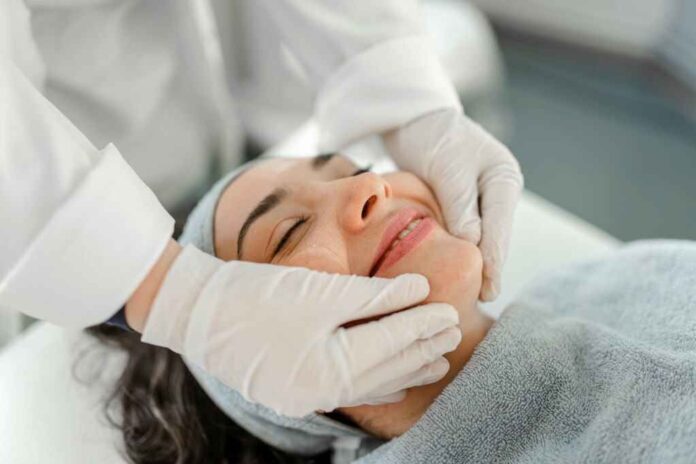Aesthetic Dermatology for Cellulite: Beneath your skin, there is a collection of fat that pushes against the connective tissues. This collection of fat is known as cellulite. It is a common and harmless condition in which the surface of your skin becomes lumpy and dimpled after the formation of cellulite. Cellulite often forms on the thighs, abdomen, and other areas of the body. 85% of the women are familiar with the cellulite on their legs. It mostly occurs due to high levels of estrogen in adolescence or pregnancies.
Symptoms of Cellulite:
It is often described as an orange peel texture at stage 1 cottage cheese texture at stage 2 and mattress texture at stage 3. Mild cellulite is observed by pinching the skin where cellulite forms whereas severe cellulite appears as bumpy valleys on the skin areas. Commonly found cellulite on legs, thighs, and buttocks but rarely found on breasts, abdomen, and underarms.
Causes of Cellulite: (Aesthetic Dermatology)
There is no specific or known cause of the formation of cellulite. Under the muscle, there is a layer of fibrous connective cords that attach to the skin. When fat cells accumulate the skin pushes down and the cords become long and tough which is the reason for lumpy skin. Weight, muscle tone, and hormonal factors play important roles in the formation of cellulite. Even very fit people have cellulite may be because of weight or muscle tone. Hormones like insulin, estrogen, noradrenaline, prolactin, and thyroid hormones contribute to cellulite formation. Less oxygen in the area also reduces the production of collagen fat cells become enlarge and push the skin.
Risk Factors:
Cellulite appears more in women than men after puberty or in pregnancy due to changes in hormonal balance. Men have connective tissue in the form of criss-cross pattern while women have connective tissue in the form of a fence so fat cell easily slips and push skin. The chance of developing cellulite increases with aging because at that time the skin loses its elasticity. Genetic Factors also contribute as a major risk factor in the development of cellulite. There is no specific treatment but if you worry about your skin then consult an aesthetic dermatologist. In Aesthetic Dermatology, the dermatologist offers services such as chemical peels, laser, and microneedling.
Treatment of Cellulite:
Cellulite can be treated through a low-fat diet, smoking cessation, and an active lifestyle. Cellulite is not caused by toxins so a healthy and active lifestyle may reduce the risk. Low salt, carbohydrates, and fat diet can reduce the risk also. Dermatology has a lot of techniques to treat cellulite(Dermatology is a certified doctor that studies dermatology a complex discipline that covers skin issues like cellulite, psoriasis, eczema, and burns).
Acoustic wave therapy (hand-held device to transmit sound waves), Laser treatment (inserting a small laser probe under the skin, then laser is fired to break the tissues), subcision (inserting a needle under the skin to break the connective tissue band), vacuum-assisted precise tissue release, carboxytherapy (it involves inserting carbon dioxide under the skin), endermologie (it is deep massage that lifts the skin),


